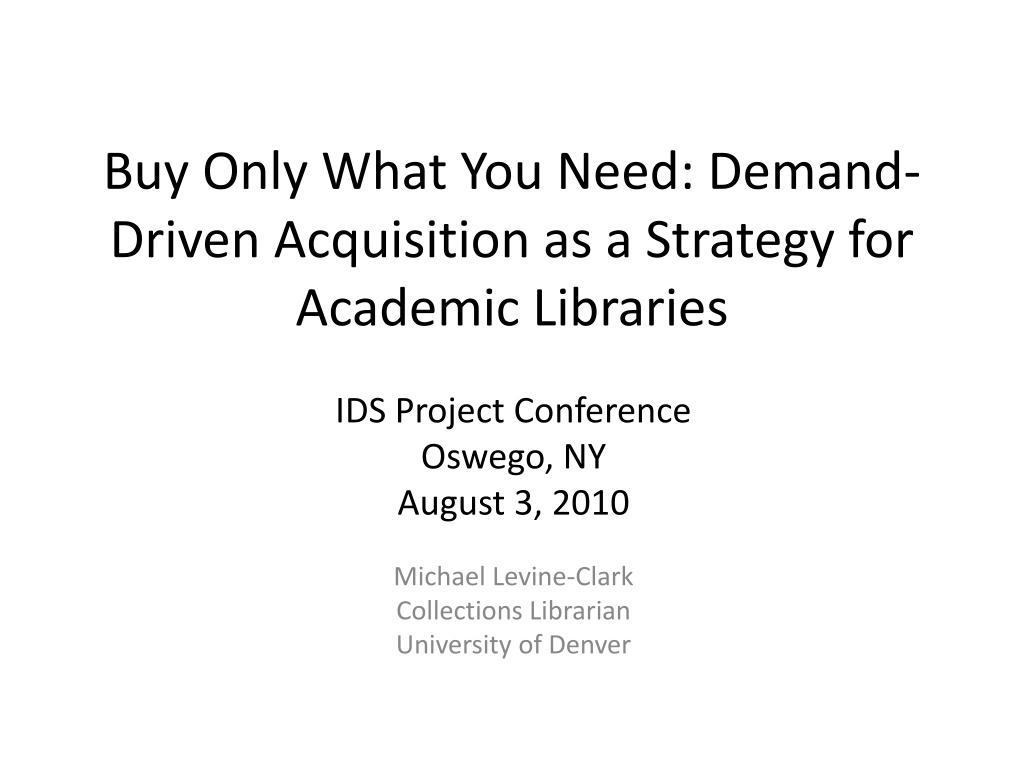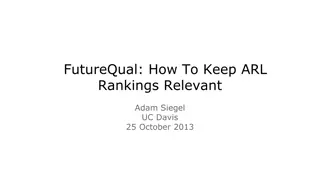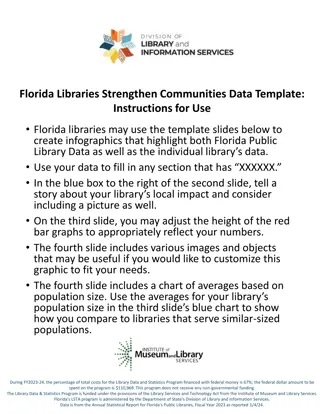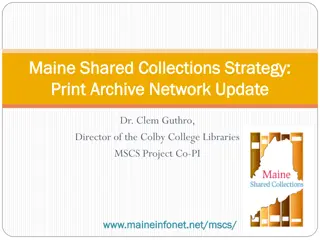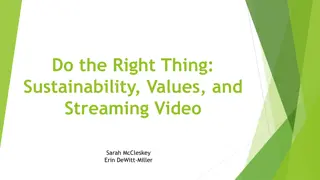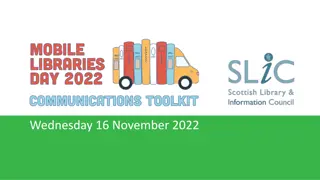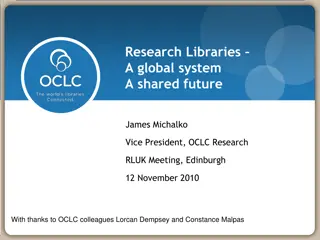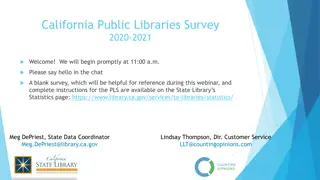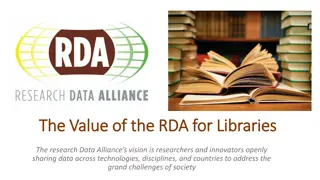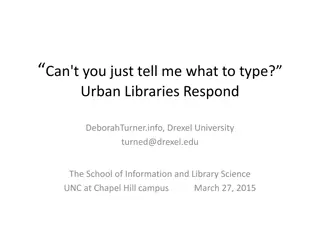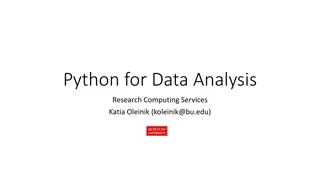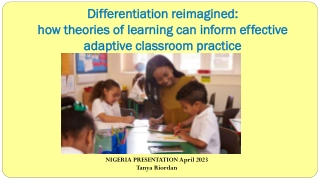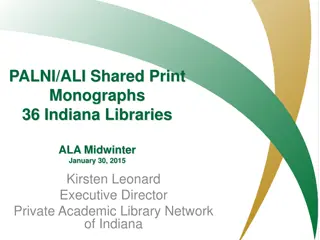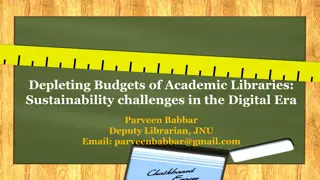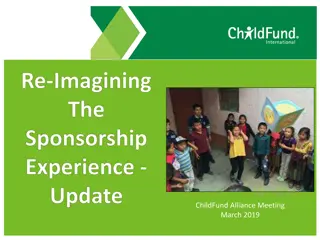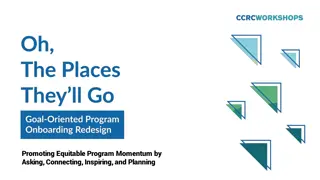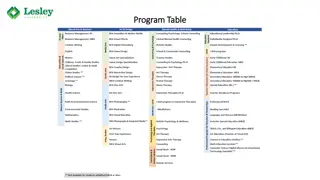Reimagining Acquisition Strategies in Academic Libraries
Explore the benefits of Demand-Driven Acquisition (DDA) for academic libraries, as highlighted in a study conducted at the University of Denver. Discover the challenges faced with unused book titles, excessive spending, and the evolving landscape of digital resources. Understand the importance of adapting to user demand while optimizing library resources.
- Academic Libraries
- Demand-Driven Acquisition
- University of Denver
- Digital Resources
- Library Management
Download Presentation

Please find below an Image/Link to download the presentation.
The content on the website is provided AS IS for your information and personal use only. It may not be sold, licensed, or shared on other websites without obtaining consent from the author. Download presentation by click this link. If you encounter any issues during the download, it is possible that the publisher has removed the file from their server.
E N D
Presentation Transcript
Buy Only What You Need: Demand- Driven Acquisition as a Strategy for Academic Libraries IDS Project Conference Oswego, NY August 3, 2010 Michael Levine-Clark Collections Librarian University of Denver
Why Demand-Driven Acquisition?
University of Denver Data All Books 2000-2009 252,718 titles (25,272 a year) 46.9% unused (118,387) 2000-2004 126,953 titles 39.6% unused (50,226) FY 2010 Approx $1 million spent on monographs
University of Denver Data University Press Books* 2000-2009 40,058 titles (8,012 a year) 39.7% unused (15,883) 2000-2004 20,277 titles 31.0% unused (6,278) * University Press in publisher field
University of Denver Use Data (Titles Cataloged 2000-2004) All U.P. 4+ 3 2 1 0 23,854 (18.8%) 10,461 (8.2%) 16,257 (12.8%) 26,155 (20.6%) 50,266 (39.6%) 4,029 (19.9%) 1,954 (9.6%) 3,134 (15.5%) 4,882 (24.1%) 6,278 (31.0%)
University of Denver Use Data (U.P. Titles Cataloged in 2000) Ever Used 932 (22.1%) 424 (10.0%) 682 (16.1%) 968 (22.9%) 1,217 (28.8%) Used 2005 or Later 882 (20.1%) 349 (8.3%) 439 (10.4%) 475 (11.2%) 2,078 (49.2%) 4+ 3 2 1 0
The Universe of Titles 170,663 books published in the U.S. in 2008* 53,869 books treated on approval by Blackwell in FY 2008 (North America) 23,097 forms generated in FY 2008 4,687 titles ordered from forms *Library and Book Trade Almanac 2009, p. 506 (preliminary data).
Everything is Different Born-digital books shouldn t go out of print OP material easy to find Users expect remote access We re more accountable to our administrations Budget Shelf space
How Were Implementing Demand-Driven Acquisition
Developing a DDA Plan for DU Jan 2009: Begin conversations with Blackwell Spring 2009: Begin conversations with EBL Summer/fall 2009: EBL/Blackwell platform development Dec 2009: YBP/Blackwell announce merger Jan 2010: Begin conversations with YBP Spring 2010: Implement DDA with EBL Spring 2010: Plan DDA with YBP Summer 2010: YBP/EBL negotiations
The EBL Model First five minutes: free First three uses: STL 1 or 7 days Fourth use: purchase
The University of Denver Plan Print and Electronic Books YBP and EBL Slips No fiction or textbooks Discovery through the catalog POD (eventually) Automatic approval books will continue to come automatically (for now)
The User Experience Catalog eBook Print book Landing Page Designed by EBL Links to both versions More information eBook platform eBook Link to catalog for print (eventually) Request eBook platform seamless Catalog links to landing page
Workflow MARC records loaded (based on YBP slip notifications) Requests routed through Acquisitions (III Millennium Recommendations) Acquisitions places order YBP or Baker & Taylor Book received Patron notified Future: drop ship to patron
Assessment Feedback Form (p) At Request At Delivery Slip Ordering (p) Use Data (p and e) Overlap of p and e
Dealing with Uncertainty Budgeting Constant vigilance Be ready to spend in May/June Be ready to suppress records/turn off access By date By publisher By series By use trends For all
Building Permanent Access Purchased ebooks Purchased print books Purchased POD Links to other unpurchased content Series Subjects Publishers
Impact on Researchers Can they Browse the collection? Get books as needed? Get older books?
Impact on Libraries What about ILL? Blur between ILL/Acquisitions eBook rental replaces ILL? What about Collections of Record? Are we still building collections, or are we just buying books?
Impact on Librarians More time for harder selection? Less connection to collection?
Implications for Scholarly Publishing Less predictable Reduced frontlist sales? Increased backlist sales? Fewer copies sold per title? Higher cost per title? Fewer titles published? Better ebook sales?
Implications for Authors Harder to publish a book? Implications for tenure/promotion Alternate forms of publication?
Short Term eBooks Multiple aggregators Inconsistent coverage Inconsistent DRM Publisher platforms Print books On Demand = by mail Speculative purchasing for many titles
The Ideal Model All scholarly monographs available e/POD Aggregator or publisher POD in library Speculative purchasing Rare/unusual Special collections Based on solid use data
Thank You Michael Levine-Clark michael.levine-clark@du.edu 303.871.3413
